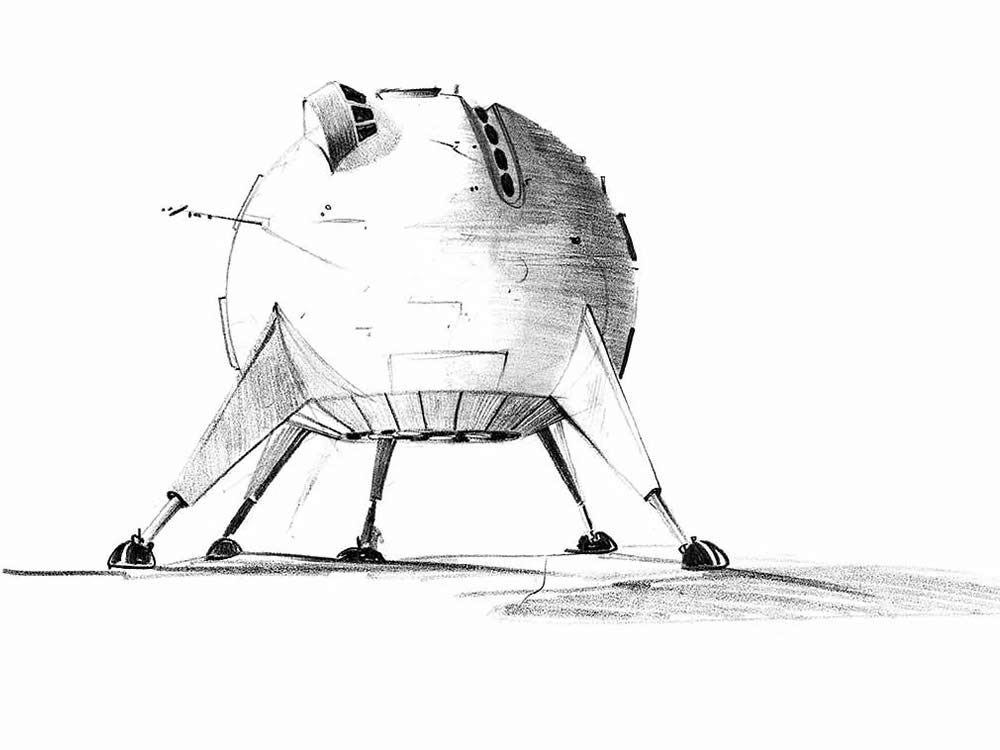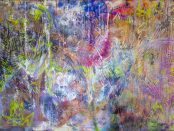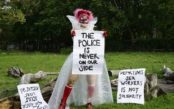[dropcap style=”font-size:100px;color:#992211;”]2[/dropcap]001: A Space Odyssey forged a new relationship between life and art, science fact and science fiction, with an absolutely painstaking approach to design and development. This new edition of Christopher Frayling’s book on the film commemorates and explores the intricate processes which finally brought 2001’s unique aesthetics and perspectives to the screen, matching the film’s meticulous approach with its own.
Comprising an exploration of the story behind the project, it also offers an exhaustive collection of preliminary drawings and research by designer Harry Lange, building a picture of the bridge between the present and the perceived (or possible) future which was so important to Stanley Kubrick.
The book falls into two distinct sections, the first of which looks at where the germ of the idea for the film came from: originally titled ‘Journey Beyond the Stars’ (which was later dropped for sounding a little too comic-book) Kubrick at first hoped to work with Ken Adam, his colleague during the making of Doctor Strangelove, but events conspired to prevent this. Although already a sci-fi fan, the book reveals Kubrick’s very specific aims for his own sci-fi and the work he was prepared to do in order to increase 2001’s verisimilitude. The right designer was key.
Step forward Harry Lange, introduced to Kubrick by sci-fi author Arthur C. Clarke, who wrote 2001: A Space Odyssey concurrently with the development of the film. Lange’s work for the military and his future projects designs for NASA made him a perfect fit for Kubrick’s ambitious new project. The second section of the book contains a vast catalogue of Lange’s preliminary sketches and detailed designs for 2001, organised by key scene and plot point and presented alongside stills from the film itself, so Lange’s work can be seen from its earliest point to its completion. Lange’s task here was clearly extraordinary and the sketches and blueprints included in the book are exhaustive.
The book overall is well researched with lots of primary sources, including lengthy excerpts from private correspondence and almost overwhelming levels of detail, with as much to say on what didn’t make it into the film as what did. This is very much a book for the ardent fan rather than the casual Kubrick viewer, but then by setting the scene in terms of contemporary optimism regarding space travel, the legacy of the sci-fi genre up until that point and of course Kubrick’s extraordinarily specific vision for his film, the unique significance of 2001 is successfully brought to the fore. As you would expect, this is a lavishly illustrated book throughout, with interesting and well-chosen posters, press features, an extract from the first draft screenplay, memoranda, and photos alongside Lange’s designs. As an interesting and scrupulous study of a film’s inception and its progression through to the finished article, this new edition has a great deal to offer to cineastes and design buffs alike.
The 2001 File: Harry Lange and the Design of the Landmark Science Fiction Film is reissued by Reel Art Press today.
[button link=”https://www.amazon.com/2001-File-Landmark-Science-Fiction/dp/0957261020/ref=sr_1_1?keywords=the+2001+file&qid=1569872650&sr=8-1newwindow=”yes”]Buy on Amazon[/button]
Keri can usually be found contributing to Reprobate Press, where she covers a bit of everything, or writing and editing Warped Perspective, a website which features cult film, TV, art and books.



















